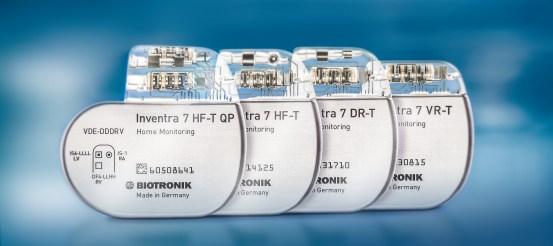IMPACT
The IMPACT of BIOTRONIK Home Monitoring Guided Anticoagulation on Stroke Risk in Patients with ICD and CRT-D Devices
Martin et al., European Heart Journal 2015
Study Design
- Prospective, multicenter, single-blinded, and randomized trial
- Investigates the clinical benefit of the combined use of BIOTRONIK Home Monitoring technology and a predefined anticoagulation plan compared to conventional device evaluation and physician-directed anticoagulation in subjects with implanted dual-chamber defibrillators or cardiac resynchronization devices
- A technical roll-out phase of 200 subjects at 30 clinical sites was conducted prior to the start of the large pivotal trial. The pivotal trial included 2,718 subjects and 104 active clinical sites worldwide
Key Result 1
The primary event rate did not differ between the intervention and control groups (2.4 vs. 2.3/100 patient-years, respectively; HR 1.06).
Key Result 2
Major bleeding rates were 1.6 and 1.2/100 patient-years (HR 1.39; 95% CI 0.89–2.17; P = 0.145).
In patients with AT, thromboembolism rates were 1.0 vs. 1.6 per 100 patient-years (relative risk −35.3%; 95% CI −70.8 to 35.3%; P = 0.251).
Key Result 3
Although AT burden was associated with thromboembolism, there was no temporal relationship between AT and stroke.
Clinical Relevance
- Early initiation of anticoagulation based on device-detected ATdid not improve outcomes, in part because of temporal dissociation between AF and stroke, and possibly because of stroke mechanisms independent of AF
- Additional studies are needed to elucidate stroke mechanisms in patients with advanced heart disease to inform anticoagulation decision for AF detected by implanted cardiac rhythm management devices
- The results do not support urgent initiation or any later withdrawal of anticoagulation in response to incident AFor its termination, and argue instead for anticoagulation based on more comprehensive, individualized assessment of risk and benefit
| Study Objective |
|
|---|---|
| 1° Endpoints |
|
| 2° Endpoints |
|
| Clinical Sites |
|
| Sample Size |
|
| Inclusion Criteria |
|
| Main Exclusion Criteria |
|
| Devices |
|
| Follow-Up |
|
| Study Duration |
|
| Reference No. |
|
| Principal Investigators |
|
Download Section

Tachycardia Therapy
BIOTRONIK offers an extensive product portfolio in the area of tachycardia therapy.
